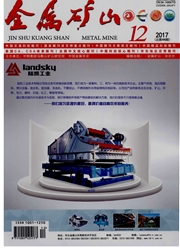

 中文摘要:
中文摘要:
随着矿山开采深度和排岩量的不断增加,排土场的高度越来越高,排土场的稳定性将越来越差。如遇大型降雨,可能会造成滑坡,给矿山生产和生命财产带来危害。因此开展排土场稳定性监测,对于保证矿山安全生产至关重要。利用红外热成像技术对鞍钢鞍千矿的2个排土场的稳定性进行了监测,发现了4处低温异常区域,结合热力学理论和现场勘查确定异常区域为含水的砂土层。由于这些沙土层本身强度较低,属于弱层,而含水后又增加了其滑动性,因而给排土场的稳定性造成重要影响。此研究成果为矿山排土场稳定性监测提供了新的技术方法。
 英文摘要:
英文摘要:
With the increasing of mining depth and the amount of waste rock,the height of dump is becoming higher and higher,and dump stability will be getting worse. In case of heavy rainfall,landslides may be occurred,which may bring huge damages to mine production and lives.Therefore,it is very important to monitor dump stability to ensure mine safety production.The infrared thermal imaging technology was used to monitor the stability of two dumps of Anqian Mine,and four low temperature anomalies were found,combined thermodynamics theory and field investigation the abnormal region was finally confirmed water-sand layer.Because of the low strength of sand soil layer,it belongs to weak layer,and then its sliding property was increased by water,so it influenced the stability of dump a lot.A new technical method is provided for the stability monitoring of mine dump via the research result.
 同期刊论文项目
同期刊论文项目
 同项目期刊论文
同项目期刊论文
 期刊信息
期刊信息
